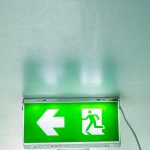You are here: Building Projects \ Specified Systems, Compliance Schedules & BWOFs

Under the Building Act 2004, building owners are responsible for ensuring their buildings are safe to use. If the building contains specified systems or features, this includes keeping these systems and features in good working order and to provide Council with an annual Building Warrant of Fitness (BWOF). The Compliance schedule also needs to be updated as a part of a Building Consent application if there are any additions or alterations to Specified Systems within the building as a result of the Building Consent.
A specified system means a system or feature that—
These systems ensure a building is safe and healthy for members of the public to enter, occupy or work in. A Compliance Schedule must identify which of these systems are present.
A Compliance Schedule is a document issued by Council that lists specified systems and performance standards for the systems, and how the systems will be monitored and maintained to ensure they will continue to function. This is applied to as part of the application for Building Consent for new commercial buildings or alterations/additions to a commercial building (if the building has one or more specified systems). The compliance Schedule is issued with the Code Compliance Certificate (CCC).
Compliance Schedule Statement
A Compliance Schedule Statement is issued by a Territorial Authority (see B. Act 2004 s104A). A Compliance Schedule Statement lists the specified systems covered by the Compliance Schedule and is issued at the same time as the Code Compliance Certificate (CCC). It must be displayed on the premises in a public place, and be replaced in 12 months with a Building Warrant of Fitness (which is issued by the building owner).
Amending a Compliance Schedule
An amendment to a compliance schedule may be triggered/required if:
It is the responsibility of the building owner or their agent to make the application for the amendment on the Building Forms called Compliance Schedule Amendment (Form 11) on the prescribed form found on the Applications and Checklists page. For more information refer to MBIE website.
Details of the specified systems (safety systems) must be provided with any building consent application where there are specified systems associated with the building. These details must include the performance standards and the proposed inspection, maintenance and reporting procedures for the specified safety systems in the building.
Please download and complete in full, the appropriate form(s) for each kind of specified systems relating to the building. Compliance Schedule Details forms are located by clicking the link here.
An IQP is a tradesperson who is qualified to carry out any performance inspection, maintenance, reporting or recommendation on a specified system. ‘Independent’ means that the person has no financial interest in the building. It is the owner’s responsibility to employ an approved IQP and to ensure that the inspections occur at the required times.
Please refer to the Regional Register of approved IQPs available under our IQP and Producer Statements page.
A Building Warrant of Fitness (Form 12) is a statement issued and signed by the owner or agent of a commercial or public building, confirming that the specified systems (safety systems) stated in the Compliance Schedule for their building have been maintained and checked in accordance with the Compliance Schedule for the previous 12 months; and that they will continue to perform as required. A BWOF (Form 12) must be
The building owner must retain all inspection and testing records for two years and these must be available for inspection at the locations stated in the BWOF. Owners have the responsibility of carrying out some of the minor inspections that are specified to occur daily, weekly or monthly. An Independent Qualified Person (IQP) must be employed by the owner to verify that the inspection, maintenance and reporting procedures have been carried out. The IQP supplies the owner with a Certificate of Compliance (Form 12A) which allows the owner to then issue the BWOF (Form 12). The owner must ensure that all the Certificates of Compliance are attached to the BWOF supplied to Council. Forms 12 and 12A are standard forms that are specified in Section 108 of the Building Act 2004.
Read
Councils periodically audit the BWOFs to ensure that they have been completed correctly and that the maintenance checks they are based on have been recorded in a log that is kept in the building. This audit is charged to the owner. For the schedule of audit fees or for further information please contact the Building Unit of your local Council.
Available from MBIE – this is a guidance document for building owners and managers regarding the monitoring and maintenance of specified systems.
Legislation:
Other Information:
For further information on Compliance Schedules or Building Warrants of Fitness, please contact the Building Unit of your local Council.